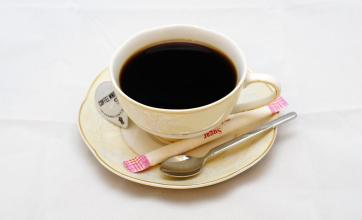Geisha (also known as geisha) Coffee beans Colombian flavor description manor area introduction
Geisha (also known as geisha) Coffee beans Colombian flavor description manor area introduction
The fragrance of flowers, tropical fruits, strong sweetness; these are the feelings that Rose Summer has always given us. Properly baked, they make you feel like sipping the fragrance of a bouquet of flowers. You may not know the story of Rosa, an ancient native species from Ethiopia that was brought as a coffee sample to a coffee experimental garden in Costa Rica and distributed to several small farms for small-scale trials.
Not many people followed Rose Summer until one day, Esmeralda Manor in Panama separated it from other varieties and won the national coffee competition.
She is so extraordinary that the fruity and floral elements are like Yega Xuefei from Africa and Ethiopia on the other side of the world. Of course, these are all old news now. Some small farms also get summer roses and are eager to grow their own roses.
However, the results are different, and this "star" variety seems to have different tastes in different geographical locations due to the influence of weather, soil and altitude. However, in the Aktenango area, we see typical rosy summer features: the slender shape of beans, the changes during baking, and the elegant and uncooked flavor in the cup.
Bourbon (Bourbon Bourbon) gene mutants: Kenya [SL28] and [SL34] (Bourbon)
Rose summer (Geisha geisha coffee)
Yellow bourbon (Bourbon Amarello)
Kaddura (Caturra)
Pacas (Pacas)
Vera Saatchi (Villa Sarchi)
Elephant bean (Maragogype Malago Rippi) Arabica intraspecific hybridization (Intraspecific Hybrid) New World (Mundo Novo)
Kaduai (Catuai)
Pacamara (Pacamara)
Interspecific hybridization between Kent Arabica and Robusta stout bean (Interspecific Hybrid) Tim (Timor)
Kadim (Catimor)
Ikatu (Icatu)
Ruyilu 11 (Ruiru 11)
Qiang Zhuo Jiri (Chandragiri

Important Notice :
前街咖啡 FrontStreet Coffee has moved to new addredd:
FrontStreet Coffee Address: 315,Donghua East Road,GuangZhou
Tel:020 38364473
- Prev

Are Ethiopian coffee beans G1 and G2 just different in the number of defective beans?
Ethiopian coffee beans G1 and G2 are only different in the number of defective beans. Honey treatment is to remove immature beans and other defective bean leaves after flotation of coffee beans, and then carry out red, yellow and black treatment according to different regions. Yellow honey usually removes the most peel, about 40 percent peel, red honey 25 percent peel, black honey only peel, and then
- Next

Introduction to the characteristics of roasting degree of Indonesian Mantenin Coffee by the description of taste and Flavor
Indonesia Mantenin coffee roasting degree characteristics taste flavor description method grinding scale introduction coffee is mainly produced in Java, Sumatra and Sulawi, Robusta species account for 90% of the total output. Sumatra Manning is a rare Arabica species. The trees were planted on hillsides between 750m and 1500 meters above sea level, and the mysterious and unique Sumatra gave Mann
Related
- Detailed explanation of Jadeite planting Land in Panamanian Jadeite Manor introduction to the grading system of Jadeite competitive bidding, Red bid, Green bid and Rose Summer
- Story of Coffee planting in Brenka region of Costa Rica Stonehenge Manor anaerobic heavy honey treatment of flavor mouth
- What's on the barrel of Blue Mountain Coffee beans?
- Can American coffee also pull flowers? How to use hot American style to pull out a good-looking pattern?
- Can you make a cold extract with coffee beans? What is the right proportion for cold-extracted coffee formula?
- Indonesian PWN Gold Mandrine Coffee Origin Features Flavor How to Chong? Mandolin coffee is American.
- A brief introduction to the flavor characteristics of Brazilian yellow bourbon coffee beans
- What is the effect of different water quality on the flavor of cold-extracted coffee? What kind of water is best for brewing coffee?
- Why do you think of Rose Summer whenever you mention Panamanian coffee?
- Introduction to the characteristics of authentic blue mountain coffee bean producing areas? What is the CIB Coffee Authority in Jamaica?

